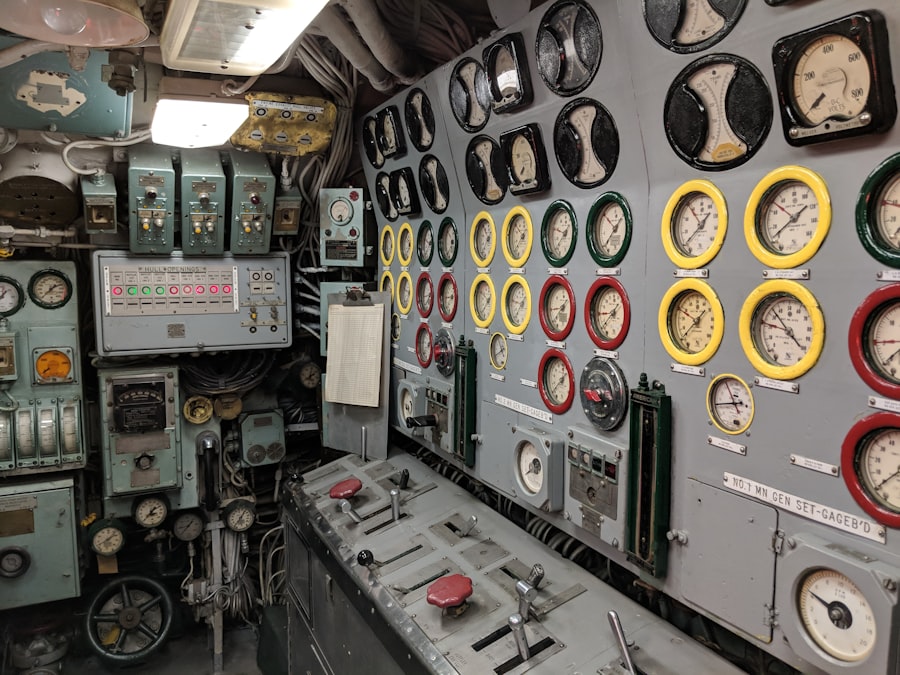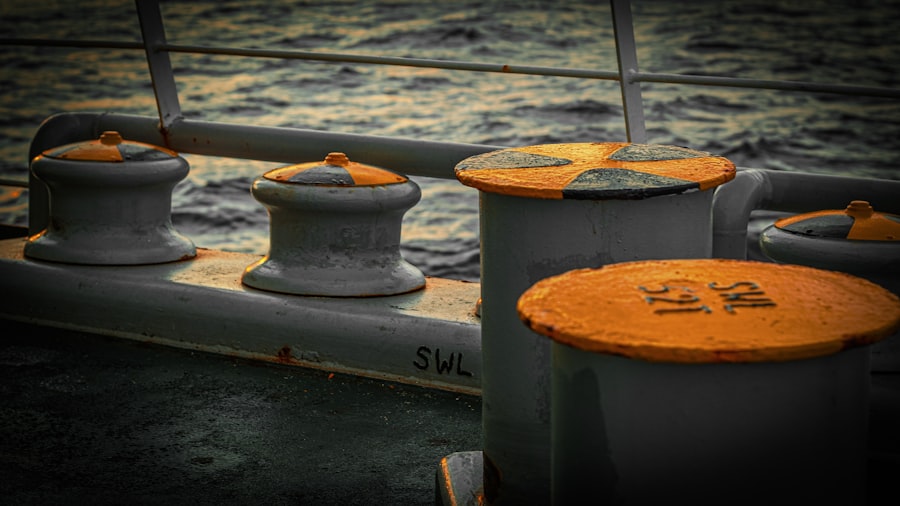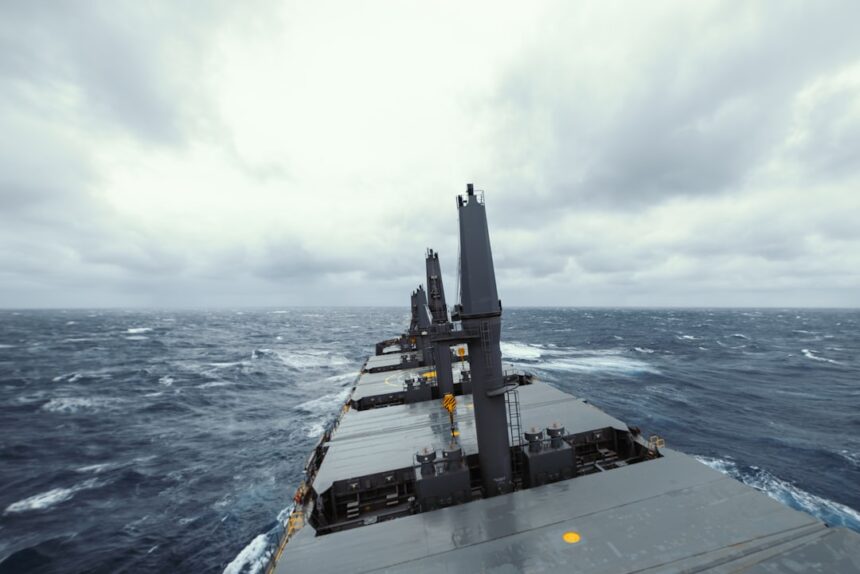Anti-submarine warfare (ASW) has emerged as a critical component of naval strategy, particularly in the context of modern maritime conflicts. The primary objective of ASW is to detect, track, and neutralize submarines, which pose significant threats to naval vessels and coastal installations. Submarines, with their stealth capabilities and advanced weaponry, can disrupt maritime trade routes and project power far beyond their home waters.
As such, the evolution of ASW tactics and technologies has been a continuous endeavor for naval forces around the globe. The importance of ASW cannot be overstated, especially in an era where submarines have become increasingly sophisticated. The development of nuclear-powered submarines, for instance, has allowed these vessels to operate for extended periods without surfacing, complicating detection efforts.
Consequently, navies have invested heavily in research and development to enhance their ASW capabilities. This article will explore the historical trajectory of anti-submarine warfare, from its early challenges to its current state and future prospects.
Key Takeaways
- Anti-sub warfare has evolved significantly over the years, from early challenges and developments to modernizing tactics and technology.
- World War I marked the rise of anti-sub warfare, as nations developed new strategies and technologies to combat the threat of enemy submarines.
- The interwar period saw advancements and innovations in anti-sub warfare, including the use of sonar and depth charges.
- World War II was the height of anti-sub warfare, with intense battles and the development of new anti-submarine weapons and tactics.
- The ongoing importance of anti-sub warfare is evident in current challenges and threats, as well as the need for international cooperation and alliances to address these issues.
Early Challenges and Developments
The origins of anti-submarine warfare can be traced back to the late 19th century when the advent of submarines introduced a new dimension to naval warfare. Early submarines were rudimentary and often operated on the surface, making them vulnerable to detection. However, as technology advanced, so did the capabilities of these underwater vessels.
The introduction of torpedoes and improved propulsion systems allowed submarines to become more effective in combat scenarios, prompting navies to develop countermeasures. In the early 20th century, navies began experimenting with various methods to combat submarines. The use of nets and barriers was one of the first defensive strategies employed, but these proved largely ineffective against more agile and stealthy submarines.
The development of depth charges marked a significant advancement in ASW tactics, allowing naval forces to target submerged submarines more effectively. However, the challenges of accurately locating and engaging these elusive targets remained a persistent issue.
World War I: The Rise of Anti-Sub Warfare

World War I marked a turning point in the evolution of anti-submarine warfare. The conflict saw the widespread use of submarines by Germany, which employed them as a means of disrupting Allied shipping lanes. The effectiveness of German U-boats in sinking merchant vessels prompted an urgent response from the Allies, leading to the establishment of dedicated ASW units.
These units utilized a combination of depth charges, patrol vessels, and aerial reconnaissance to counter the submarine threat. The introduction of convoy systems during World War I was a pivotal development in ASW strategy. By grouping merchant ships together for protection, the Allies were able to reduce losses significantly.
This tactic not only provided a physical barrier against U-boat attacks but also allowed for coordinated ASW efforts among naval forces. The lessons learned during this period laid the groundwork for future advancements in anti-submarine warfare.
Interwar Period: Advancements and Innovations
| Advancements and Innovations | Description |
|---|---|
| Automobile Industry | Mass production of cars, leading to increased mobility and economic growth |
| Aviation Technology | Development of commercial airlines and advancements in aircraft design |
| Radio and Broadcasting | Introduction of radio broadcasting, transforming communication and entertainment |
| Medical Innovations | Advancements in medical technology and pharmaceuticals |
| Art and Culture | Emergence of new artistic movements and cultural innovations |
The interwar period was characterized by significant advancements in both submarine and anti-submarine technologies.
Sonar systems enabled ships to detect submerged submarines by emitting sound waves and analyzing the echoes that returned.
This innovation revolutionized ASW tactics, providing naval forces with a reliable means of locating underwater threats. Additionally, the development of aircraft as a platform for ASW operations began to take shape during this time. Naval aviation emerged as a crucial component of maritime strategy, with planes equipped with bombs and depth charges being deployed for anti-submarine missions.
The combination of aerial reconnaissance and surface ship capabilities created a more comprehensive approach to countering submarine threats, setting the stage for the intense naval battles that would unfold during World War
World War II: The Height of Anti-Sub Warfare

World War II represented the zenith of anti-submarine warfare tactics and technologies. The conflict saw an unprecedented scale of submarine operations, particularly by German U-boats in the Atlantic Ocean. In response, Allied forces implemented a multifaceted approach to ASW that included improved sonar systems, depth charges, and coordinated air-sea operations.
The Battle of the Atlantic became a defining theater for ASW efforts, as both sides sought to gain control over vital shipping routes. One of the most notable innovations during this period was the development of escort carriers—smaller aircraft carriers designed to provide air support for convoys. These vessels played a crucial role in extending the reach of ASW operations by deploying aircraft capable of conducting reconnaissance and attacking submarines from above.
The integration of technology and tactics during World War II not only enhanced ASW effectiveness but also underscored the importance of collaboration among naval forces.
Cold War Era: Evolving Tactics and Technology
The Cold War era brought about a new set of challenges for anti-submarine warfare as the geopolitical landscape shifted dramatically. With the emergence of nuclear-powered submarines capable of operating at greater depths and speeds, traditional ASW methods faced significant hurdles. The Soviet Union’s investment in submarine technology prompted Western navies to adapt their strategies accordingly.
During this period, advancements in sonar technology continued to evolve, with the introduction of more sophisticated systems capable of detecting quieter submarines. Additionally, the development of submarine-launched missiles added a new dimension to naval warfare, necessitating an even greater emphasis on ASW capabilities. The Cold War also saw increased collaboration among NATO allies in sharing intelligence and resources to counter the submarine threat posed by Soviet forces.
Post-Cold War: Modernizing Anti-Sub Warfare
Following the end of the Cold War, anti-submarine warfare underwent a transformation as navies sought to modernize their capabilities in response to emerging threats. The proliferation of advanced submarine technologies among various nations necessitated a reevaluation of ASW strategies. Navies began investing in multi-domain operations that integrated air, surface, and subsurface assets for more effective anti-submarine campaigns.
The rise of non-state actors and asymmetric warfare also influenced ASW approaches in the post-Cold War era. While traditional state-on-state conflicts remained a concern, navies had to adapt to new challenges posed by irregular threats that could exploit maritime vulnerabilities. This shift prompted an emphasis on intelligence gathering and surveillance capabilities to enhance situational awareness in maritime environments.
Current Challenges and Threats
In today’s complex security landscape, anti-submarine warfare faces numerous challenges that require innovative solutions. The proliferation of advanced submarine technologies among both state and non-state actors has made detection increasingly difficult. Stealthy designs and advanced noise-reduction techniques have allowed modern submarines to operate with greater effectiveness than ever before.
Moreover, geopolitical tensions in regions such as the South China Sea have heightened concerns about submarine operations and their implications for regional security. As nations invest in expanding their submarine fleets, navies must remain vigilant in developing countermeasures that can effectively address these evolving threats. The integration of artificial intelligence and machine learning into ASW systems is one potential avenue for enhancing detection capabilities in an increasingly crowded maritime domain.
International Cooperation and Alliances
Recognizing the transnational nature of submarine threats, international cooperation has become essential in addressing challenges related to anti-submarine warfare. Alliances such as NATO have fostered collaboration among member states in sharing intelligence, conducting joint exercises, and developing standardized ASW protocols. These cooperative efforts enhance collective security by ensuring that allied forces can respond effectively to submarine threats.
Furthermore, partnerships with non-NATO countries have also emerged as vital components of modern ASW strategies. Collaborative exercises with nations that possess advanced submarine capabilities can provide valuable insights into best practices and emerging technologies. By fostering relationships based on mutual interests in maritime security, navies can strengthen their collective ability to counter submarine threats on a global scale.
Future Prospects and Developments
Looking ahead, the future of anti-submarine warfare is likely to be shaped by continued technological advancements and evolving geopolitical dynamics. The integration of unmanned systems—both aerial and underwater—holds promise for enhancing ASW capabilities by providing additional layers of surveillance and engagement options. These systems can operate in environments that may be too risky for manned vessels while offering real-time data analysis.
As navies adapt to new challenges posed by emerging submarine technologies, ongoing research and development will be essential for maintaining effective anti-submarine capabilities in an increasingly complex maritime environment.
The Ongoing Importance of Anti-Sub Warfare
In conclusion, anti-submarine warfare remains a vital aspect of modern naval strategy as nations navigate an evolving security landscape characterized by advanced submarine technologies and geopolitical tensions. From its early challenges to its current state, ASW has undergone significant transformations driven by technological innovations and strategic imperatives. As navies continue to adapt their tactics and invest in new capabilities, the importance of effective anti-submarine warfare will only grow.
The ongoing commitment to international cooperation and collaboration among allied forces will be crucial in addressing emerging threats posed by submarines worldwide. As nations work together to enhance their ASW capabilities through shared knowledge and resources, they will be better positioned to safeguard maritime interests and ensure stability in an increasingly interconnected world.
The history of U.S. Navy anti-submarine warfare is a fascinating journey that highlights the evolution of naval tactics and technology. From the early days of World War I, when the threat of German U-boats prompted the development of new detection and engagement strategies, to the sophisticated sonar and underwater drones used today, the U.S. Navy has continually adapted to counter submarine threats. For a deeper dive into this topic, you can explore an insightful article on the subject by visiting In The War Room, which provides a comprehensive overview of the advancements and challenges faced in anti-submarine warfare throughout history.
WATCH THIS! America’s Nuclear Navy Was Born From Espionage
FAQs
What is the history of US Navy anti-submarine warfare?
The US Navy has a long history of anti-submarine warfare, dating back to World War I when it first began using depth charges and other tactics to combat German U-boats.
What are some key developments in US Navy anti-submarine warfare?
Key developments in US Navy anti-submarine warfare include the use of sonar technology, the development of anti-submarine aircraft and helicopters, and the use of advanced torpedoes and underwater weapons systems.
How has US Navy anti-submarine warfare evolved over time?
US Navy anti-submarine warfare has evolved to incorporate advanced technology such as sonar arrays, unmanned underwater vehicles, and sophisticated computer systems for tracking and targeting enemy submarines.
What role does anti-submarine warfare play in the US Navy’s overall strategy?
Anti-submarine warfare is a critical component of the US Navy’s overall strategy, as it is essential for protecting naval assets, maintaining sea control, and denying enemy submarines the ability to operate freely.
What are some notable successes of US Navy anti-submarine warfare?
Notable successes of US Navy anti-submarine warfare include the tracking and destruction of enemy submarines during World War II, the Cold War, and more recent conflicts such as the Gulf War and the War on Terror.




